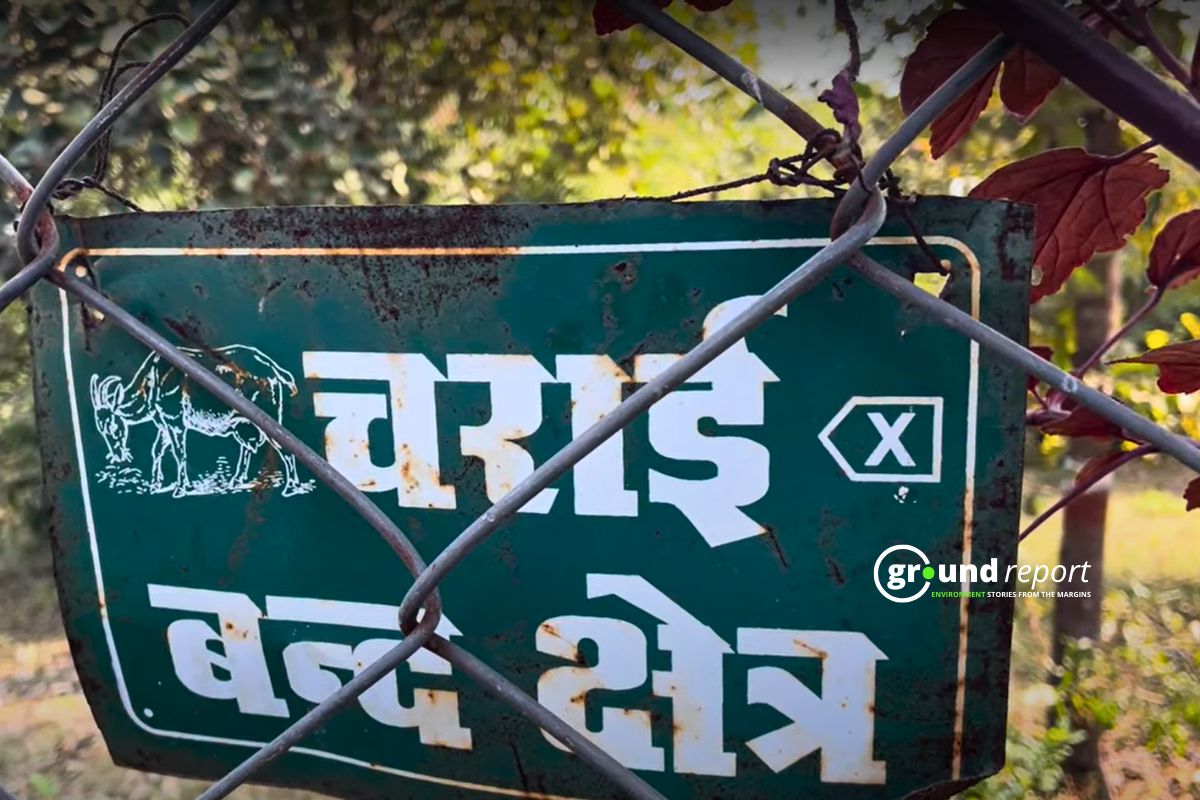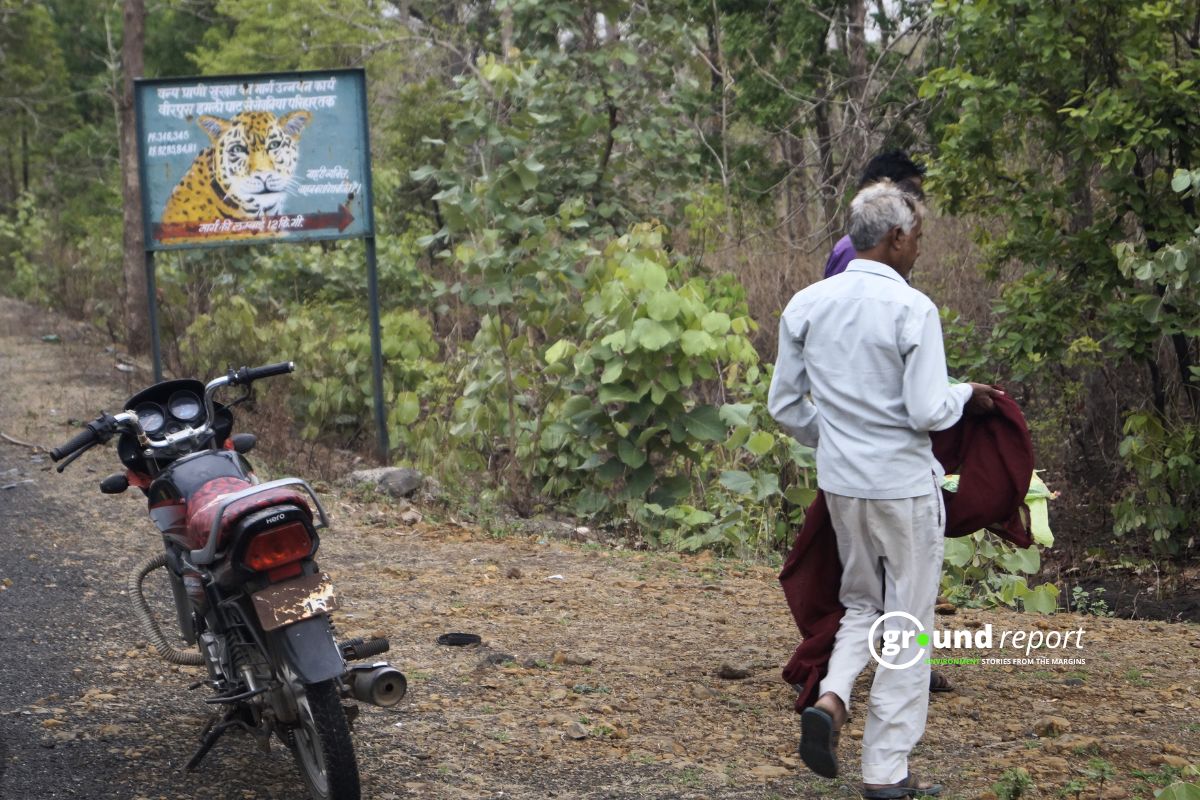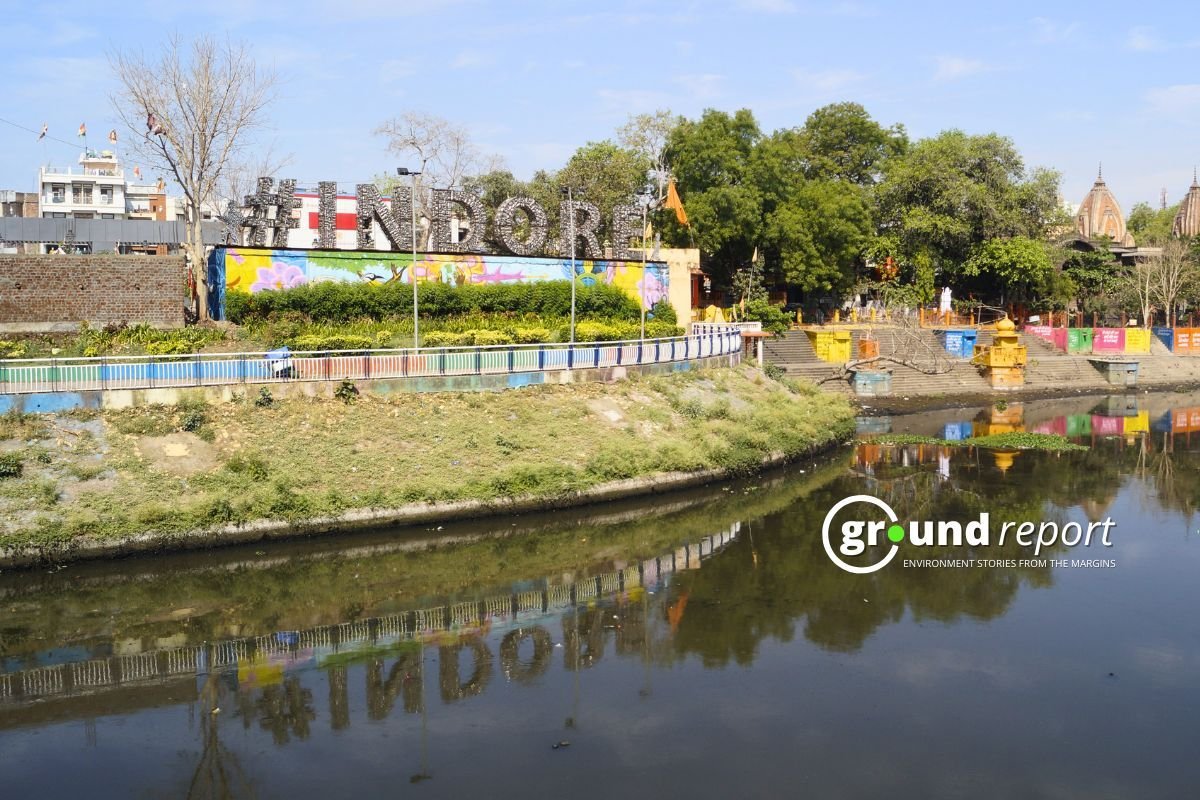Mansingh (55), a resident of Kucholi village in Vidisha district, has been unemployed for the past year. Earlier, he used to work as a driller in a stone quarry near his village. However, his health–shortness of breath and persistent cough– has forced him to stop working. He tested positive for TB (Tuberculosis) five years ago and got his treatment done at a private hospital in Bhopal. After getting relief in three months, he stopped his medicines. As an explanation, he said,
“In 3 months, I spent 8-10 thousand rupees on medicines. I got relief and the money also ran out, so after 3 months I stopped taking medicines.”
His heath had gotten better, but he hadn’t completely recovered. With no medicines, his TB regained within a few months. While Man Singh narrates his grief, another TB patient approaches us towards the stone bench. Mansingh is not the only TB patient in Kucholi village, as illegal stone quarries are the only source of employment for the people of Ganj Basoda block of Vidisha district in Madhya Pradesh. The age, height and colour of these patients may differ, but all of them either work in the nearby stone quarry or have worked in the past. However, this work is pushing them towards a serious disease like silico tuberculosis.
This is the third time Man Singh has tested for TB. To this, he said, “Whenever I start working in the mine, I get the disease again.”
The roofs of houses in the village are made of stones instead of tiles. The walls of the houses are made of stones rather than bricks. But more importantly, the air these people breathe while working contains stone dust. The fields are full of rocks, and dust significantly impacting their agriculture. In addition, the water crisis worsens here in summer.
Mansingh’s symptoms reflect silico-tuberculosis (silico-TB) i.e. he has a combination of both silicosis and TB. This disease is caused by silica dust particles entering the body. There is a patient whose entire family died because of TB.
In scientific language, pathophysiology shows that silica particles stimulate Th2 cells and M2 macrophages. Due to this the immune system of the body gets impaired and TB increases. Whereas, they inhibit Th1 cells and M1 macrophages, which fight against the disease.
TB disease, and the cycle of poverty
When Man Singh was first diagnosed with TB, he worked in the mines. He took medicines but kept working in the stone quarry. His cough increased, and his health deteriorated. As he said, he was helpless. His economic realities dwarfed his health concerns. He said,
“If I did not go to work, where would the money come from? I used to earn a week, then only I could buy medicines.”
His two sons also work in the same industry, and Man Singh is afraid for them. However, here too his economic realities dwarfed health concerns. He said in a voice full of despair.
“There is no other business here… Either you load the tractor or work as a labourer breaking stones. I am afraid but I am helpless, what can I do?”
Man Singh also has a 3 bigha (1.8 acre) leased land. However, due to a lack of suitable means of water, he only sows monsoon crops. He said that the farm was not enough to feed his family for a year. Man Singh said that his economic reality, along with his illness impacted the future of their children. They could not study after the 5th standard. Even the education till 5th standard in the village wasn’t education, he stated.
Some four years ago, Man Singh stopped working due to bad health. His wife Lalita Bai (48) recalled those desperate, and depressing times. Lalita said,
“Relatives stopped asking about our well-being… No one stood with us. There is no other source of income here except the mine. How could I send my daughters to the mine?“
Apart from farming, Lalita said that her elder son contributes a little to the household expenses He works as a labourer in Indore. She borrows milk and essential ration from the grocery store and repays the loan in a year or six months when the crop is harvested and sold.
According to government statistics, 18 per cent of the Indian population faces financial crisis due to diseases. In the case of TB patients, 7 to 32 per cent (page 16, TB Report 2023) of drug-sensitive TB (DS-TB) patients face this financial crisis. On the other hand, 68 per cent of drug-resistant TB (DR-TB) patients face financial crisis. 37.4 per cent of the population of Vidisha district lives below the poverty line. Despite their economic realities, Lalita Bai took care of her husband’s health with utmost sincerity. Here, her affection towards him dwarfed their economic realities. Recalling that terrible period of economic poverty, she said,
“Still we fed him dal-daliya.”
Superstition, and governmental negligent
Man Singh said that he used to vomit repeatedly after taking medicine for TB, and his body heat used to increase. During his daughter’s wedding, he became anxious– potentially had a panic attack– so, people suggested that he should conduct a puja for his well-being. He spent 5,000 rupees for this special puja. Baba told him that now he should take his medicine again, and he would get well. Interestingly, Man Singh’s wife said,
“After the puja, the medicine suited him and he also got relief.”
TB treatment is lengthy and can take up to a year. This can lead patients to lose patience and seek alternative remedies from faith healers or superstitious practices. Initially, patients may experience side effects like nausea or anxiety from the medication. Misinterpreting these reactions, some may discontinue their treatment. However, if doctors provide thorough education and guidance at the outset, patients can better understand and manage these challenges, reducing the likelihood of treatment abandonment.
A non-profit organisation called Prasoon has been working in this area since 1984. According to Pramod Pateria, a social worker associated with it, people suffer from silicosis because of the mines. However, they are just being treated for TB. Pateria said,
“The authorities are reluctant to classify these individuals as silicosis patients… Such designation necessitates compensation payments. Second, it would expose illegal mining operations in the area.”
However, TB cases are decreasing in Vidisha district and Ganjbasoda block. In the year 2021, 2550 cases were notified. Whereas, till July this year, 1553 cases have been notified here. Whereas for the Ganjbasoda block, this figure is 602 and 251 respectively. While Man Singh, and his family struggle, their demand from the government is very genuine. Lalita said,
“The government ensure such a house under, Pradhan Mantri Awas Yojana”. Their house floods every monsoon.
2025 eradication dream
Apart from ration schemes, in Kucholi village, residents also lack access to essential government programs like PM Awas and Nal-Jal. Furthermore, many tuberculosis patients have yet to benefit from eradication programs such as the Nikshay Poshan Yojana and Nikshay Mitra. Urgent implementation of these schemes is critical, as the prevalence of TB is exacerbating poverty in the community.
According to the National Strategic Plan for TB (NSP for TB 2017-25), the target is to completely eradicate TB from the country by 2025. Whereas, the global target for this has been set as 2030. The mentioned document categorically states that the person suffering from silicosis is more susceptible to TB. Labourers working in stone mines are more likely to suffer from silicosis i.e. individuals like Man Singh are at a dual risk of both silicosis and TB.
In 2019, 2.65 million cases of silicosis were reported worldwide. According to estimates, 227 million workers in the world are at risk of contracting this disease. According to another study conducted in South Africa, any worker can develop TB within 8 years of exposure to silica dust. While in India, no government data related to silicotuberculosis patients is available in the public domain.
By 2025, a study estimates 52 million Indian workers will face direct exposure to silica dust, putting in doubt the country’s goal of eradicating tuberculosis by the same year.
This article is written under the Reach Media Fellowship 2024.
Follow Ground Report on X, Instagram and Facebook for environmental and underreported stories from the margins. Give us feedback on our email id greport2018@gmail.com.
Don’t forget to Subscribe to our weekly newsletter, Join our community on WhatsApp, Follow our Youtube Channel for video stories.
More Videos
Farmers’ protest against Gail India’s ethane cracker plant in Sehore














